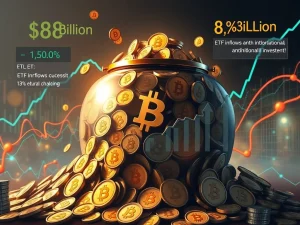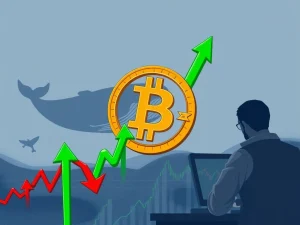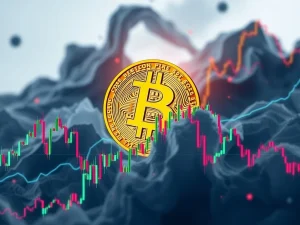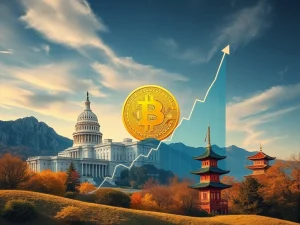Shocking Tariff Escalation: How Trump’s Move Fractures the Global Financial System and Fuels Bitcoin’s Rise
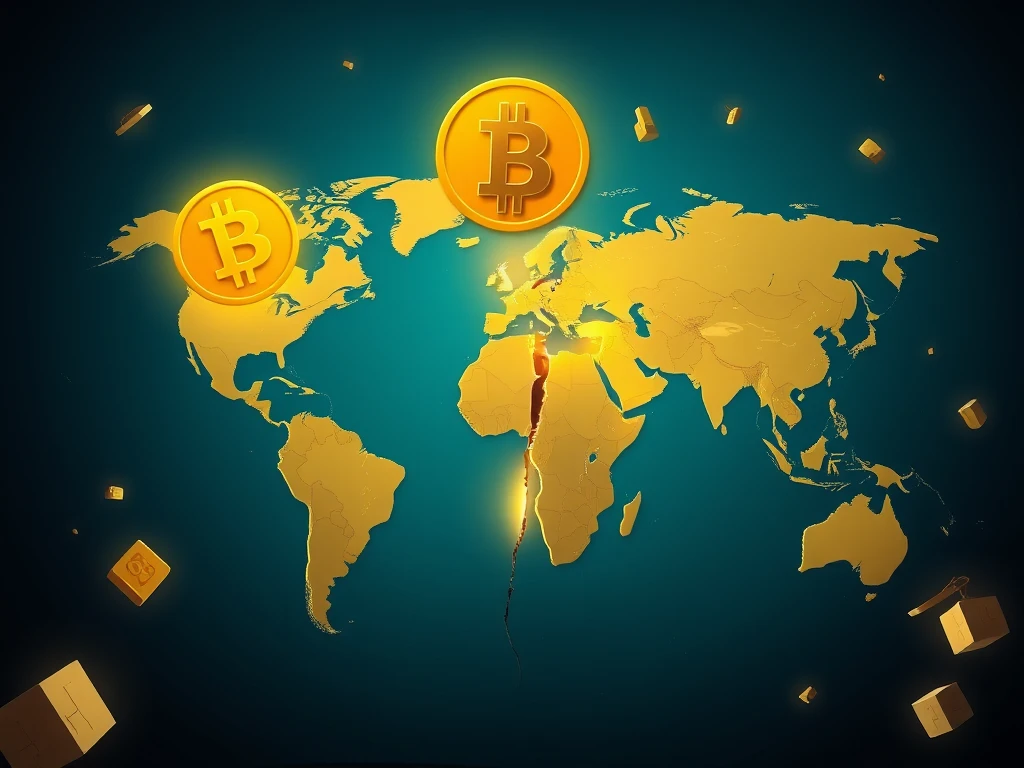
Are you feeling uneasy about the stability of the global financial system? Recent events are sending shockwaves through traditional markets, and it might be time to consider alternative strategies. President Trump’s latest tariff escalations are not just trade disputes; they’re exposing fundamental weaknesses in the very foundation of our global economy. This move is pushing investors towards safe-haven assets, and cryptocurrencies like Bitcoin, alongside tokenized real-world assets (RWAs), are emerging as compelling options. Let’s dive into what’s happening and why this could be a pivotal moment for the future of finance.
Trump Tariffs: More Than Just a Trade War?
What started as trade negotiations has quickly escalated into something far more significant. Despite a brief pause on tariff hikes announced in April, President Trump’s decision to increase tariffs on Chinese goods to 25% signals a deeper issue than simple trade disagreements. Teddy Pornprinya, co-founder of Plume, a blockchain focused on tokenized RWAs, puts it bluntly: “President Trump’s tariff escalation marks a significant inflection point for global markets,” revealing “deeper fractures in the global financial system.”
This isn’t just about import duties; it’s about the underlying vulnerabilities of a system grappling with unsustainable debt levels in major economies like the US and China. According to Pornprinya, this situation could lead to increased reliance on inflationary measures, potentially weakening currencies like the Chinese yuan. For investors, this translates to a critical question: How resilient are your assets in the face of such systemic stress?
The Hunt for Safe-Haven Assets: Why Bitcoin and RWAs Are Gaining Traction
In times of uncertainty, investors flock to safety. Traditionally, this meant gold, government bonds, or the US dollar. However, the current climate is different. The very foundations of the traditional financial system are being questioned, leading to a renewed interest in safe-haven assets beyond the conventional choices. This is where Bitcoin and tokenized real-world assets (RWAs) step into the spotlight.
Here’s why these alternative assets are becoming increasingly attractive:
- Decentralization: Bitcoin, by its very nature, is decentralized. It operates outside the direct control of governments and central banks, making it less susceptible to sovereign risks and policy decisions that can devalue traditional currencies.
- Tokenized RWAs: These assets represent real-world items like gold, real estate, or private credit, but in a digital, tokenized format on the blockchain. This tokenization brings increased liquidity, fractional ownership, and transparency.
- Inflation Hedge Potential: With concerns about inflationary pressures rising, assets with limited supply, like Bitcoin, are seen as potential hedges against inflation. Similarly, RWAs linked to tangible assets can also offer a degree of inflation protection.
The numbers speak for themselves. As tariff fears intensified, tokenized gold trading volumes surged to a two-year high, exceeding $1 billion in a week. Onchain RWAs also hit a record high, surpassing $20 billion, with tokenized private credit leading the charge at $12.7 billion. This isn’t just a fleeting trend; it’s a significant shift in investor behavior.
Tokenized Real-World Assets (RWAs): A $50 Billion Market by 2025?
The growth of tokenized real-world assets is remarkable. With the RWA market already exceeding $20 billion, some analysts predict this figure could reach $50 billion by the end of 2025. This optimistic forecast is fueled by the expectation that increased liquidity in the RWA space will attract a substantial share of the massive $450 trillion global asset market.
But what exactly are the benefits driving this RWA boom?
| Benefit | Description |
|---|---|
| Increased Liquidity | Tokenization makes traditionally illiquid assets like real estate or private credit more easily tradable. |
| Fractional Ownership | Investors can own fractions of high-value assets, lowering the barrier to entry. |
| Transparency and Efficiency | Blockchain technology provides transparent and efficient record-keeping, reducing intermediaries and streamlining processes. |
| Access to New Markets | Tokenization opens up access to global markets and diversifies investment opportunities. |
While Bitcoin captures headlines, RWAs are quietly building a robust ecosystem that bridges the gap between traditional finance and the world of digital assets. The potential for growth is immense, and as the global financial system faces increasing pressure, RWAs could become a cornerstone of modern investment portfolios.
Bitcoin’s Resilience: Navigating Trade War Uncertainty
Despite the positive narrative around RWAs, Bitcoin remains a central figure in the crypto safe-haven narrative. While Bitcoin’s price action might not always immediately reflect geopolitical tensions, its underlying appeal as a store of value strengthens during periods of economic uncertainty. The recent tariff escalations are a prime example of this.
However, it’s crucial to maintain a balanced perspective. Analysts at Bitfinex suggest that the tariff hikes might be more of a negotiating tactic than a permanent policy shift. They believe the US administration is using tariffs as a “bargaining tool” to persuade other countries to lower their own trade barriers. Raoul Pal, founder of Global Macro Investor, echoes this sentiment, suggesting the tariff negotiations could be “posturing” to reach an agreement.
The outcome of these negotiations will significantly influence global risk assets, including the crypto market. Nansen analysts predict a 70% chance of the crypto market bottoming out by June 2025 before a potential recovery. This suggests that while short-term volatility might persist, the long-term outlook for crypto, particularly Bitcoin, remains positive, especially in the context of a potentially unstable global financial system.
Looking Ahead: Embrace the Shift?
Trump’s tariff escalations have undeniably exposed vulnerabilities within the global financial system. This situation, while concerning, also presents opportunities. The rise of safe-haven assets like Bitcoin and tokenized real-world assets is not just a reaction to market turbulence; it’s a sign of a fundamental shift in how investors perceive and interact with the financial world.
Whether tariffs are a temporary tactic or a long-term policy change remains to be seen. However, the message is clear: the global financial landscape is evolving, and investors need to adapt. Exploring alternative assets, understanding the potential of blockchain technology, and staying informed about geopolitical developments are no longer optional – they are essential for navigating the complexities of the modern financial world. Are you ready to explore these new frontiers?

